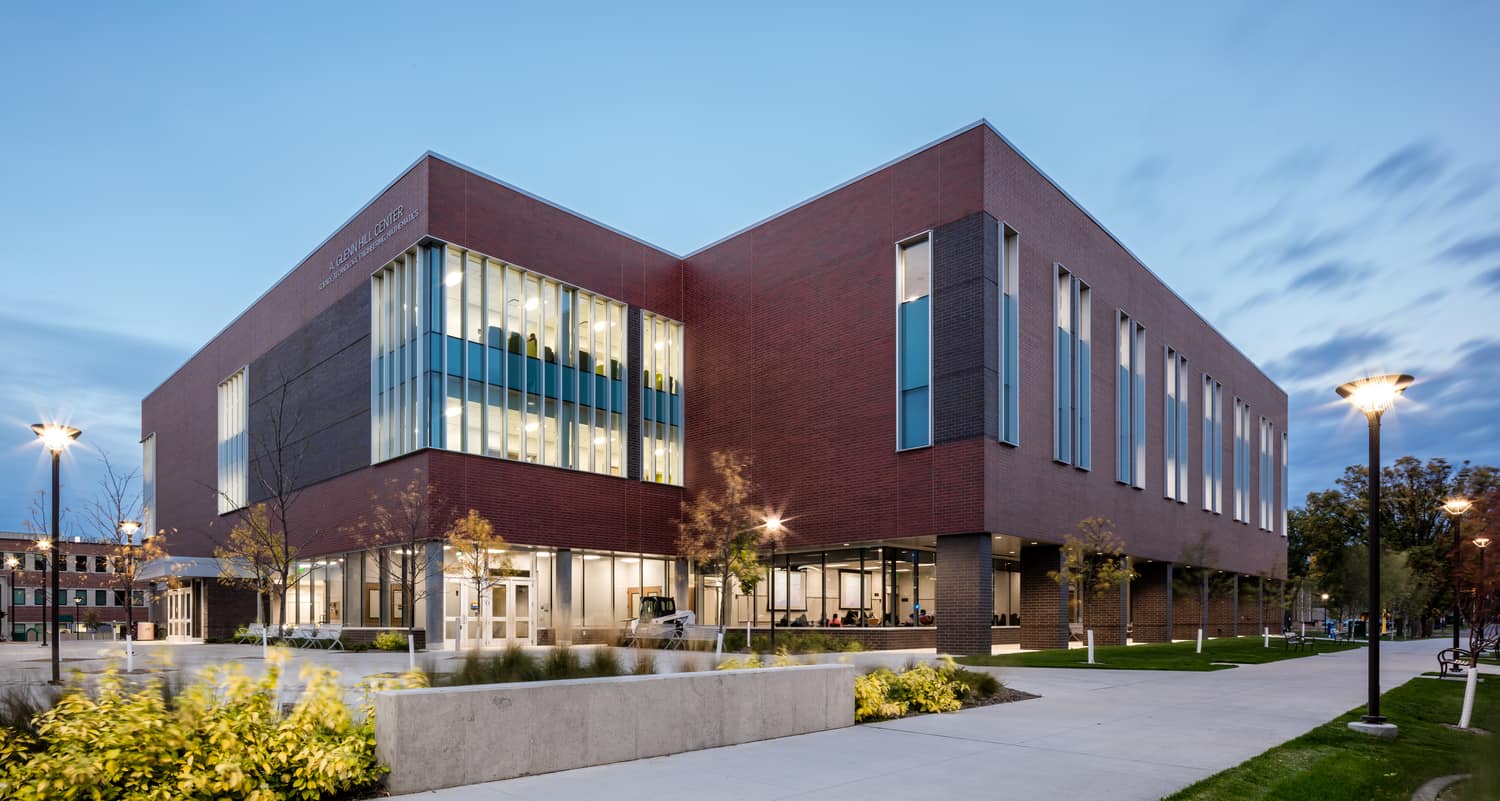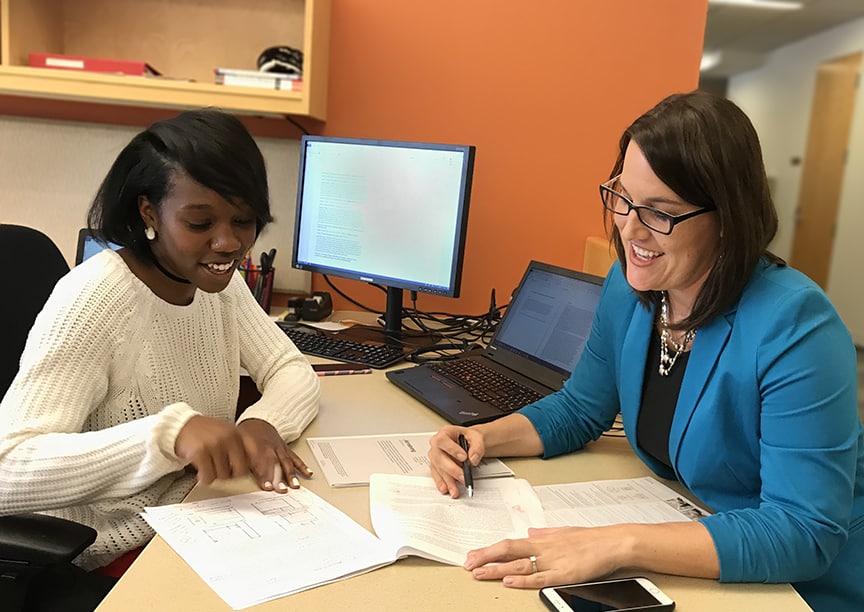An academic destination designed to bring together disciplines in science, technology, engineering and mathematics, the A. Glenn Hill Center for STEM Education at North Dakota State University was recognized for design excellence during the 2017 AIA North Dakota Design Conference and Exposition held Oct. 9-11.
A collaborative design effort between BWBR and Zerr Berg Architects, the A. Glenn Hill Center provides space for multiple undergraduate disciplines to meet, collaborate, and discover under one state-of-the-art roof.
“Students learn best in an active and energizing atmosphere,” said Stephanie McDaniel, AIA, LEED AP, a principal at BWBR and lab and academic planner on the center. “The A. Glenn Hill Center creates an environment that engages student in meaningful and collaborative work, and it gives the university a facility to create cross-disciplinary environments that can adapt to changes in technology and needs.”
Opened in 2016, the STEM center features spacious auditoriums, flexible teaching labs, and active learning classrooms. Physical barriers are removed to support immersive, mobile teaching styles that boost students’ experiential education. Movable furniture combined with pod-like group tables, screens, electronic device plug-ins, and whiteboards shift away from traditional lecture-style methods to provide students and faculty a richer connection in real time.
While programmed to support STEM learning, a multi-story entry and open seating lined by floor-to-ceiling windows invite the rest of the NDSU community to fully engage in the STEM experience. Brightly colored furniture options mix with open and closed study alcoves along the main corridor to complete invite students into cross-disciplinary discussions and studies. Laboratories and classrooms accommodate multiple uses, equipment, and teaching styles in order to adapt to the needs of the entire campus.
To aid in the design, BWBR also sponsored two NDSU architectural design graduate students to complete evidence-based design research on collaboration in information spaces in higher education an energy-efficient design. Their findings were incorporated into the building design.
“Great design really empowers people to do great work – and to do great work together,” said Craig Peterson, AIA, LEED AP, associate principal at BWBR and project design leader who is also a graduate of the university’s architectural program. “This high performance facility gives NDSU a tool to train the region’s future STEM innovators, and it also serves to bring together the entire campus community as a place of collaborative interaction on many levels. Generations will be proud of what comes out of the A. Glenn Hill Center.”



